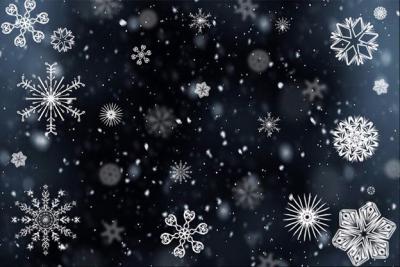Snow Shape Matters for Land Surface Processes
Snow has the highest albedo, or reflective ability, of any part of the land surface. It plays a vital role in Earth's surface energy budget and water cycle. However, most Earth system models assume that snow grains are spherical and that light-absorbing particles (LAPs) are separate from the snow grains. This study improves the Energy Exascale Earth System Model version 2.0’s (E3SM v2.0) snow albedo model by considering non-spherical snow grain shapes and internally mixed dust–snow. A mathematical representation of a traditional snowflake shape, known as the Koch snowflake shape, shows the largest difference from the default spherical shape treatment, while the mixing state of LAP–snow has a smaller effect on model results than snow grain shape.
This study demonstrates that snow grain shape and the mixing state of LAP–snow play important roles in snow processes, surface energy balance, and the water cycle. It also reveals that the effects of the non-spherical shape and mixing state of LAP–snow and of complex topography on snow and surface fluxes have different signs and magnitudes. This work advances scientific understanding of the uncertainties in snow albedo modeling and their subsequent effects on surface energy and water cycles. These results offer guidance for improving the simulations of snow processes and radiative forcing estimates in Earth system models.
Snow albedo is sensitive to snow grain shape and the mixing state of LAP–snow. This study implemented computationally efficient representations for non-spherical snow grain shape and internal dust–snow mixing in the snow radiative transfer model of E3SM v2.0. The improved model reasonably captures the overall snow distribution and shows smaller biases in snow cover than the original. The Koch snowflake shape, among other non-spherical shapes, shows the largest difference from the spherical shape in the modeled surface energy budget and the water cycle. The impacts of the LAP mixing state are smaller than the shape effects and also depend on snow grain shape. The individual impacts of non-spherical snow shape, the mixing state of LAP–snow, and local topography on snow and surface fluxes have different signs and magnitudes. Their combined effects may be negative or positive due to complex and nonlinear interactions.

